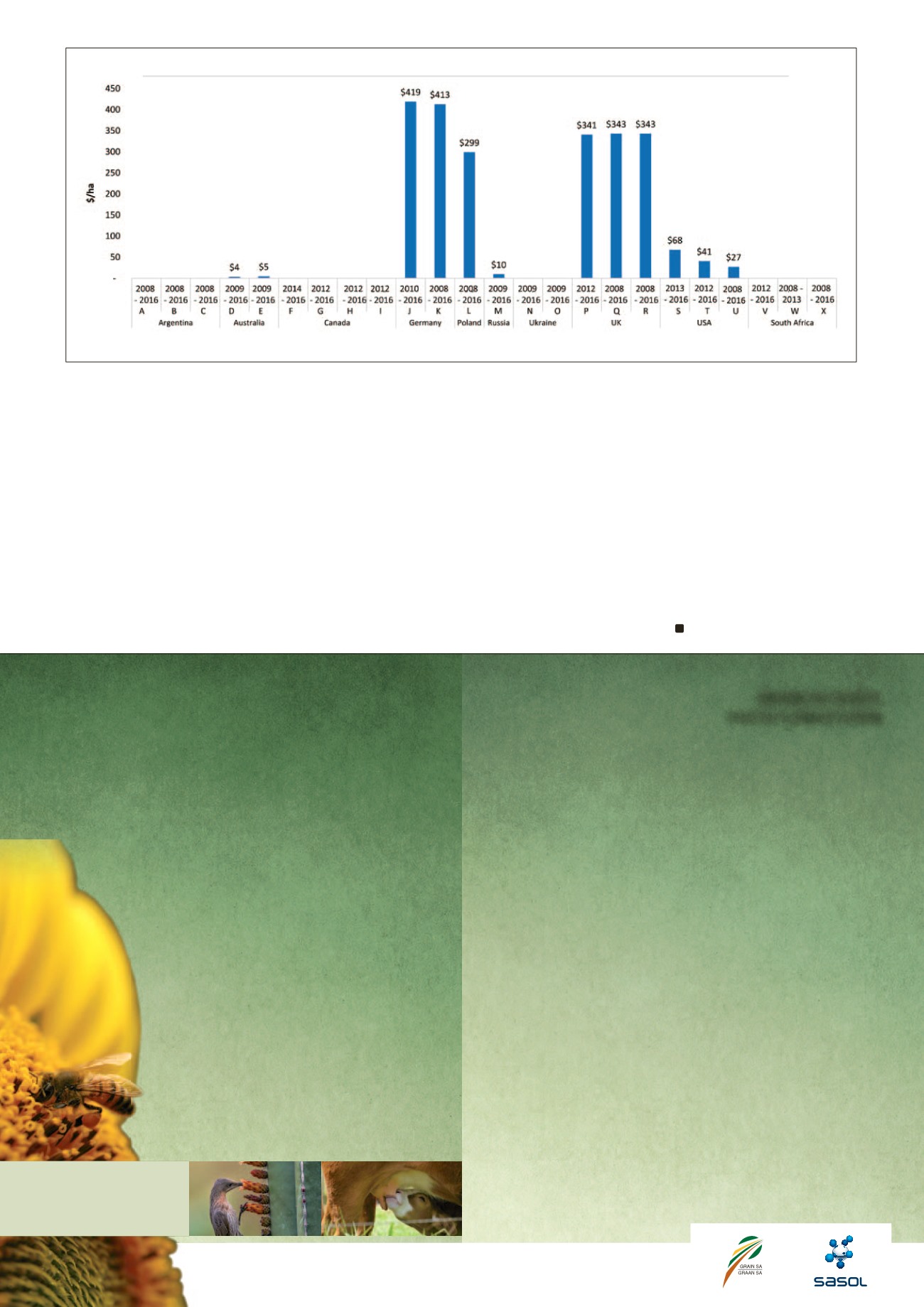

Symbiosis
– in nature, between humans
and animals and amongst
animals and humans
GRAIN SA
/
SASOL
PHOTO COMPETITION
COMPETITION RULES
1. Entries should portray the theme, ‘Symbiosis’.
2. Only amateur photographers (in other words people who do not make a living from
taking photos) may enter the competition.
3. Unacceptably manipulated photos will not be accepted. Unacceptable manipulation of
photos essentially entails adding visual elements that were not in the photo originally
(e.g. clouds or plants); as well as elements in the image that change the context or
theme of the photo (e.g. an unattractive and substantial element somewhere in the
photo). Acceptable manipulation entails the following: Changing the photo’s original
dimensions (cropping – given that it doesn’t change the context or theme), adjustments
to underexposed or overexposed parts (exposure adjustments) and adjustments to the
room temperature (the general colour tint of the photo – colour temperature correc-
tion). If in doubt about the extent of manipulation, judges may request that the original
photo be made available.
4. Only emailed entries will be accepted. The photos must not be smaller than 1 MB and
no bigger than 10 MB each, in JPG-format.
5. Photos entered must be unique and should not portray the same theme as photos en-
tered for other competitions. Photos entered must not have been published previously.
6. The photographers must provide captions for the photos as well as their postal address
and telephone number/s.
7. Participants may enter a maximum of three photos (with varying subjects) per edition.
If more than three photos are entered, the rst three photos received will be considered
for the competition.
8. A participant who is announced as a monthly winner may not enter the competition for
the following three editions.
9. People on the photos must be identied (provide a name and surname).
10. Photographers may enter their photographs up until the deadline each month.
Entries received after this date will be entered for the following month’s competition.
11. A panel consisting of two professional photographers, a representative of
SA Graan/Grain
as well as Sasol, will judge the photos each month.
12. All entries become the property of Grain SA. The photos will be stored in a data bank
and Grain SA and Sasol may use it for future promotions, marketing and publication
purposes. By entering the competition, the entrant agrees to this and no third-party
claims for copy right violation may be submitted.
13. Employees of Sasol, Grain SA and Infoworks may not enter the competition.
14. Grain SA reserves the right to reject photos that are blurry and/or do not adhere to the
competition rules.
This year’s Grain SA/Sasol photo competition theme ‘
Symbiosis
’
(Greek:
syn
= being together +
bios
=
live
) literally means ‘living to-
gether’ and refers to any direct and intimate relational cohabitation
between two organisms of different species.
Look around you with a creative eye and send us your interpretation
of this unique theme. Maybe it is a bee on a sunower or a sunbird
feasting on the nectar of an aloe? The farm worker milking a cow?
Or a producer looking at newly emerged maize? Surprise us with
your photos of the theme.
R48 000 to be won!
From January 2018 a winner will be selected every month
for twelve months continuously by a panel of judges, who
will each win a cash prize of
R1 500
. These twelve nal-
ists will, at the end of the year, be considered to be
selected as the winner of the annual competition (and
therefore the theme symbiosis). The prizes for that
competition are as follows:
R15 000 (winner)
,
R10 000 (runner-
up)
and a
third prize of R5 000
.
A big thank you to Sasol who is sponsoring this year’s prize
money again.
Please send photos to Elmien Bosch at
elmien@infoworks.biz
. Remember to
include your name, contact details and a caption for each photo with your entry.
It is also clear from these graphs that the
increase in yield has a large impact on the
financial position of the producers. The In-
ternational
agri benchmark
network also
indicated that South African wheat produc-
tion has a below average yield – even when
compared to the rest of the Southern Hemi-
sphere (
Graph 5
).
Tariff protection is also very important due
to the support that some of the importing
countries receive. To put this in perspective,
one can compare the decoupled and cou-
pled payments with that of the rest of the
world. Germany, which is one of our largest
European importers, receives as much as
$419/ha. That is almost 80% of the Western
Cape producers’ direct costs (
Graph 6
).
From the above it is clear that an increase
in yield – which can be realised by means
of new genetics, lowering of quality and
a cultivar and technology levy, will substan-
tially assist local producers financially.
Furthermore, the lowering of grading regu-
lations and possible changes in the tariff
structures can also assist producers to re-
ceive fair value for their crops, based on
quality versus price and import competi-
tive levels.
Graph 6: Decoupled and coupled payments (subsidies).
ABCD....An indication of different farms in the respective countries
V = Eastern Free State
W = Overberg
X = Northern Cape irrigation
Source: International
agri benchmark
network and BFAP
CLOSING DATES:
September: 4 September
October: 2 October
















